Foreclosure Defense
San Marcos Foreclosure Defense Attorney
Experienced Foreclosure Defense Services in California
If you have fallen seriously behind on your mortgage payments, you may be in danger of losing your home to foreclosure. Fortunately, you will have considerable time to act, and several relief options may be available.
Our San Marcos foreclosure defense lawyer has over 40 years of experience and will work directly with you to develop a plan for saving your home. At North County Bankruptcy Clinic, we take a holistic approach to each case and can walk you through all of your options for curing mortgage arrears. We will be here for you throughout each step of the process, and our team is committed to helping you access the relief you need to secure a financial future free of uncertainty and unmanageable debt.
Understanding Your Rights During Foreclosure in California
When homeowners in California are facing foreclosure, they have specific rights and protections under the California Homeowner Bill of Rights.
Here are some key rights that homeowners have when facing foreclosure in California:
- Right to Dual Tracking Protection: Lenders are prohibited from moving forward with the foreclosure process while also considering a homeowner's loan modification application.
- Right to a Single Point of Contact: Homeowners have the right to communicate with a single point of contact at their mortgage servicer throughout the foreclosure process.
- Right to Review Foreclosure Documents: Homeowners have the right to request and review their loan documents and other relevant foreclosure-related documents.
- Right to Request a Loan Modification: Homeowners can apply for a loan modification to potentially modify the terms of their mortgage and prevent foreclosure.
- Right to Foreclosure Mediation: Under certain circumstances, homeowners have the right to participate in foreclosure mediation to negotiate alternatives to foreclosure or modified loan terms.
- Right to Halt Foreclosure Proceedings: If a lender materially violates provisions of the California Homeowner Bill of Rights, homeowners have the right to seek legal action to stop foreclosure proceedings.
- Right to Reinstate the Loan: Homeowners have the right to reinstate their loan by paying all past-due amounts, including fees and costs, within a specified timeframe.
- Right to Sue for Violations: Homeowners can take legal action against lenders who violate their rights under the California Homeowner Bill of Rights. If successful, homeowners may be entitled to damages.
It is important for homeowners facing foreclosure in California to consult with legal professionals experienced in foreclosure law to understand their specific rights and options.
Foreclosure Process and Timelines in California
Many types of financial difficulties can make it tough to keep up with your mortgage. Luckily, your lender cannot initiate foreclosure proceedings just because you miss a payment or two. You will have at least 120 days from the date you first missed a payment before foreclosure can begin.
California law also requires your lender to contact you or make several attempts to contact you before they can start the foreclosure process. When they get in touch with you, they must inform you that you have a right to a “subsequent meeting,” which will be promptly scheduled if requested. This meeting involves exploring all available relief options with your loan servicer, such as a loan modification, repayment plan, or forbearance agreement.
Only after contacting you (or making qualifying attempts to contact you) can your lender file and deliver a Notice of Default. This document signals the formal start of foreclosure proceedings, and you will receive a copy at your home address within ten days of its recording. If you have received a Notice of Default and have not already hired legal representation, now is the time to do so.
You will have an additional three months from the filing of the Notice of Default before your lender can schedule a sale of the foreclosed property. This can give you additional time to pursue various forms of relief.
Remember, you also have the right to “cure” the default and stop foreclosure outright at any time. To do this, you will need to pay all missed mortgage payments, plus interest and any assessed fees. If you are continuing to experience financial difficulties at this point, this approach will, of course, probably not be practical.
If no action is taken, your lender will schedule a public sale of your property. The date of the sale must take place at least 20 days after the end of the three-month waiting period. Notice of the sale must also be posted at the property, mailed to you, and published in a local newspaper for three consecutive weeks. This is your last chance to save your home.
If your lender has initiated the foreclosure process, contact our San Marcos team online or call (760) 444-4262 to schedule a free initial consultation. We are ready to defend your home.

What Happens After Your Home is Sold?
Once your home is sold to the highest bidder, you will have extremely limited options for recovering the foreclosed property. The new owner will likely take immediate steps to evict you if you have not already vacated. You will not be on the hook for any deficiency judgment if your lender used the nonjudicial foreclosure process, and most California foreclosures are nonjudicial. This means you will not have to cover any difference between the final sale price and what you owed under your mortgage.
In total, you will typically have about 200 days from the date of your first missed mortgage payment before your home is sold, giving you ample time to hire legal representation and consider your options. Our San Marcos foreclosure defense attorney can assist you at any stage of this process and will help you take steps to protect your home.


Using Bankruptcy to Stop Foreclosure in Southern California
It is worth exploring whether a loan modification, forbearance agreement, repayment plan, or any other form of relief can help you catch up on missed mortgage payments, especially if the financial difficulties you are experiencing are only temporary. Direct negotiation with your lender may be able to produce a satisfactory outcome.
If you cannot come to an agreement with your lender, you may need to consider bankruptcy if you wish to keep your home. Two types of bankruptcy may be available, but both can temporarily stop foreclosure through the automatic stay.
The automatic stay stops all collection actions, including foreclosure. So long as your bankruptcy petition is filed before the scheduled date of the public sale, the foreclosure process must temporarily halt. Your lender will not be able to proceed without special permission from the court or until your case is over.

Is Chapter 7 or Chapter 13 the Right Choice for You?
Chapter 7 bankruptcy may be right for you if you have limited income and only a certain amount of equity in your home. Only debtors who pass the California Means Test can file for this type of relief. To pass, your current income must be less than the state’s median average income for your household size or you have little to no disposable income after subtracting qualifying expenses. w
In a Chapter 7 bankruptcy, your nonexempt assets will be liquidated to partially repay creditors. Many assets can be exempted, including some equity in your home. Under the 704 exemptions, California allows you to protect up to $600,000 of equity in your principal residence as of 2022. If you have more than $600,000 of equity in your home, you should not file for this type of bankruptcy if you want to keep your home.
Chapter 13 bankruptcy may be a better choice if you have reliable income but still cannot keep up with your mortgage payments. You will likely qualify for this form of relief if you have enough disposable income to afford a repayment plan. Chapter 13 bankruptcy does not involve liquidation but instead requires you to reorganize your debts into a single monthly payment, the amount of which is determined by what you can currently afford to pay.
You will need to make these payments over three to five years. Certain debts also receive priority and must be addressed by your plan before lower priority debts. This includes your mortgage arrears and other secured debts. Mortgage arrears must also be paid in full over the course of the plan. If you continue to make plan payments, you will most likely continue to be protected by the automatic stay, giving you multiple years of foreclosure protection.
Upon completing a Chapter 7 or Chapter 13 bankruptcy, you will generally be entitled to a discharge of any remaining unsecured debts. Outstanding credit card debt, medical bills, personal loans, and unpaid utility bills will be eliminated. This should hopefully give you the financial resources you need to stay on top of your mortgage and avoid the threat of foreclosure in the future.

Saving Homes in Riverside, Orange, Los Angeles, and San Diego Counties
We understand the thought of losing your home can be overwhelmingly frightening. No matter your circumstances, our San Marcos foreclosure defense lawyer is ready to walk you through your bankruptcy options. We will carefully evaluate your situation and advise whether Chapter 7, Chapter 13, or bankruptcy alternatives can provide the relief you need to protect your home and move forward.
Do not wait to seek legal guidance if you are worried about foreclosure. Call (760) 444-4262 or contact us online to discuss your situation with our team at North County Bankruptcy Clinic.


